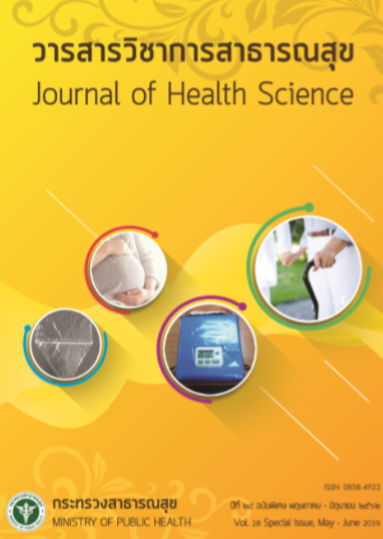การทบทวนข้อมูลโดยย่อเกี่ยวกับโรคและการรักษาพาร์กินสัน
คำสำคัญ:
ยารักษาพาร์กินสัน, โรคพาร์กินสัน, วิธีการรักษาโรคพาร์กินสัน, อัลฟาซินูคลินบทคัดย่อ
โรคพาร์กินสันจัดอยู่ในกลุ่มโรคที่เกิดจากความเสื่อมของระบบประสาท (neurodegenerative disorders) ซึ่งในปัจจุบันยังไม่ทราบสาเหตุของการเกิดโรคที่แท้จริง กว่าทศวรรษที่มีเพียงคำอธิบายว่าเกิดขึ้นจากการเสื่อมของเซลล์ที่ผลิต dopamine ในส่วนก้านสมองบริเวณ substantia nigra pars compacta (SNc) การเสื่อมของสมองในส่วนนี้ส่งผลให้เกิดการทำงานที่ไม่สมดุลในส่วนของ direct และ indirect pathway ใน basal ganglia ทำให้เกิดอาการสั่นและเคลื่อนไหวช้า หากทำการตรวจทางพยาธิสภาพในสมองของผู้ป่ วยจะพบว่า substantia nigra ที่ปกติควรมีสีเข้มจะจางลงไป พบการสะสมของโปรตีนที่ผิดปกติอาทิเช่น alpha-synuclein ทำให้เกิดเป็นก้อนโปรตีนที่รู้จักกันในชื่อของ lewy body สาเหตุของการที่เซลล์ประสาทมีการเสื่อมและตายนั้น ได้มีความพยายามที่จะอธิบายด้วยข้อสันนิษฐาน และทฤษฏีหลายอย่าง อีกทั้งยังมีคำอธิบายโดยใช้ animal model ต่างๆ การรวบรวมหลักฐานทางวิชาการโดยใช้รูปแบบการศึกษาทางเภสัชระบาดวิทยาต่างๆ การศึกษาทางอนูพันธุศาสตร์ และการศึกษากลไกทางเภสัชวิทยาที่เกี่ยวข้องกับ neuroprotective effects และ disease-modifying agents เพื่อนำไปสู่หนทางหรือกลุ่มยาที่รักษาโรคพาร์กินสัน หรือแม้แต่วิธีการตรวจพบในระยะเริ่มแรกก่อนที่อาการความผิดปกติทางการเคลื่อนไหว จะเริ่มปรากฏชัด รวมถึงการให้ความสำคัญต่ออาการอื่นที่ไม่ใช่ความผิดปกติของการเคลื่อนไหว วิธีการรักษาด้วยยาที่มีกลไกการออกฤทธิ์ใหม่ๆ ก็เป็นสิ่งที่วงการแพทย์กำลังสนใจ
Downloads
ดาวน์โหลด
เผยแพร่แล้ว
วิธีการอ้างอิง
ฉบับ
บท
การอนุญาต
ลิขสิทธิ์ (c) 2019 Journal of Health Science - วารสารวิชาการสาธารณสุข

This work is licensed under a Creative Commons Attribution-NonCommercial-NoDerivatives 4.0 International License.







